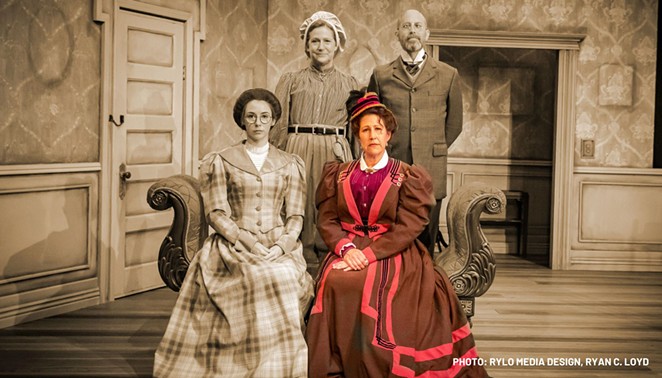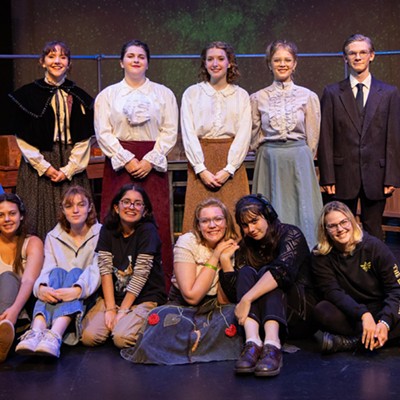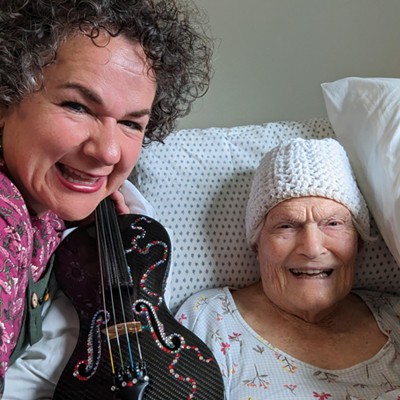A slammed door signals the end of a dramatic confrontation, but according to Karin Hendricks, it also signals the beginning of a new experience.
“The premise of this play is based on the writer just laughing at there even being a second part to such an iconic play,” Hendricks said. “You have this very definitive ending of the story that we get to explore in this ‘what if?’ scenario.”
Hendricks is directing a A Doll’s House, Part 2—a sequel of sorts to A Doll’s House—which features a cast including Suzy Newman, Josh Machamer, Katy Dore, and Madison Shaheen and is running at the San Luis Obispo Repertory Theatre until May 21.
“I probably spent more time researching Ibsen’s original play than I did researching the play we put on,” Hendricks said with a laugh. “There is no way you can direct these characters properly without understanding why they are the way they are.”
Written by Lucas Hnath in 2017, Part 2 serves as a somewhat unofficial follow-up to the original A Doll’s House written by Henrik Ibsen in 1879. It focuses on subverting what many in the audience thought would happen to main character Nora Helmer after she leaves a toxic family situation.
“The big consensus at the time Ibsen wrote the play was that Nora would suffer a lot after leaving her family in such a manner—which is the same response Hnath got from those around him when he explored the idea of writing a sequel almost 100 years later,” Hendricks said.
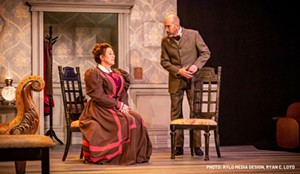
Part 2 takes place in a single room of a small Victorian-era house—the same room the original takes place in—designed by for the SLO Rep stage by Hendricks’ husband, Jason Bolen.
“Of course, I might be a little biased about how great his work on the stage ended up being, but I do think he highlighted how important having that small space was to making the characters more impactful,” she said laughing. “It was a lot of building up, not what was there physically on the stage, but wasn’t there and how we wanted to communicate that with lighting and other fixtures.”
Hendricks said Ibsen’s original piece was highly controversial for its time, featuring a headstrong female lead who shattered the traditional gender norms of a complacent stay-at-home wife. Her struggles for independence in the face of accusations of forgery and the subsequent effect it had on her marriage and children left viewers at the time—and even in the present day—appalled that a female character would even engage with such topics.
However, A Doll’s House eventually became praised as one of the first contemporary theater productions, especially with its use of a single room in which to tell the entire story, and for its positive portrayal of a Victorian-era woman’s struggle for independence.
Newman, who plays the main character, Nora Helmer, said the simple single-room set immerses her in the experience as much as it does the viewer.
“I have had people come up to me after the show and say, ‘It felt like I was peeking through the window of someone’s house,’ and that is the perfect way to describe it,” she said. “I love that feeling of having the audience feel physically close to the actors. We are looking outward and they are looking in, but it just adds something special.”
While the play would be an enhanced experience if the viewer was aware of the events of the previous first “part,” Part 2 can stand alone and adds aspects to characters that Ibsen didn’t explore fully in the original.
“It makes sense that Nora would come back and face those issues if she thrived,” Hendricks said. “I’d hope viewers see a version of what could have been, and there is this sense of growth for all of the characters that doesn’t feel like too much of a jump from Ibsen’s original work.”
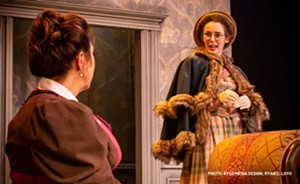
Hendricks feels the play’s dialogue is a big part of what makes the characters familiar to their Ibsen counterparts, something that Newman agrees helped her bring Nora to life.
“The writing is just so precise, and it’s a joy to just say the words,” Newman said. “You get to be eloquent and fiery, but still experience that immersion of being in that period of the late 1800s.”
Newman said she also spent a lot of time with Ibsen’s original play to learn the mannerisms and habits of Nora, who is onstage for the entire play.
“It’s like living in a book. I’m taking this ride and I just keep going and going, then all of a sudden you are at the end,” Newman said with a laugh.
She said that it was intimidating to take on the role of a character that was tied to such a heralded play, but Newman came to treat her portrayal of Nora as unique.
“I had to remind myself that despite Nora being this iconic character from Ibsen’s original, this production is meant to stand alone,” Newman said. “In a lot of ways the Nora in Part 2 is meant to be a different person because she has experienced so much away from her family after the ending of the first play.”
Both Newman and Hendricks hope that whether the viewer is new to the original piece or familiar, everyone who sees the show has a moment where they relate to the characters. She hopes that everything the production shows the audience—whether that’s witty one-liners from Nora or a dramatic tension-filled argument between other characters—will be relatable to the audience.
“Will you understand everything we put out there? Maybe,” she said laughing. “But that’s part of making an experience like this special.”
New Times Staff Writer Adrian Vincent Rosas, from the Sun’s sister paper, is still immersed. Reach him at [email protected].


